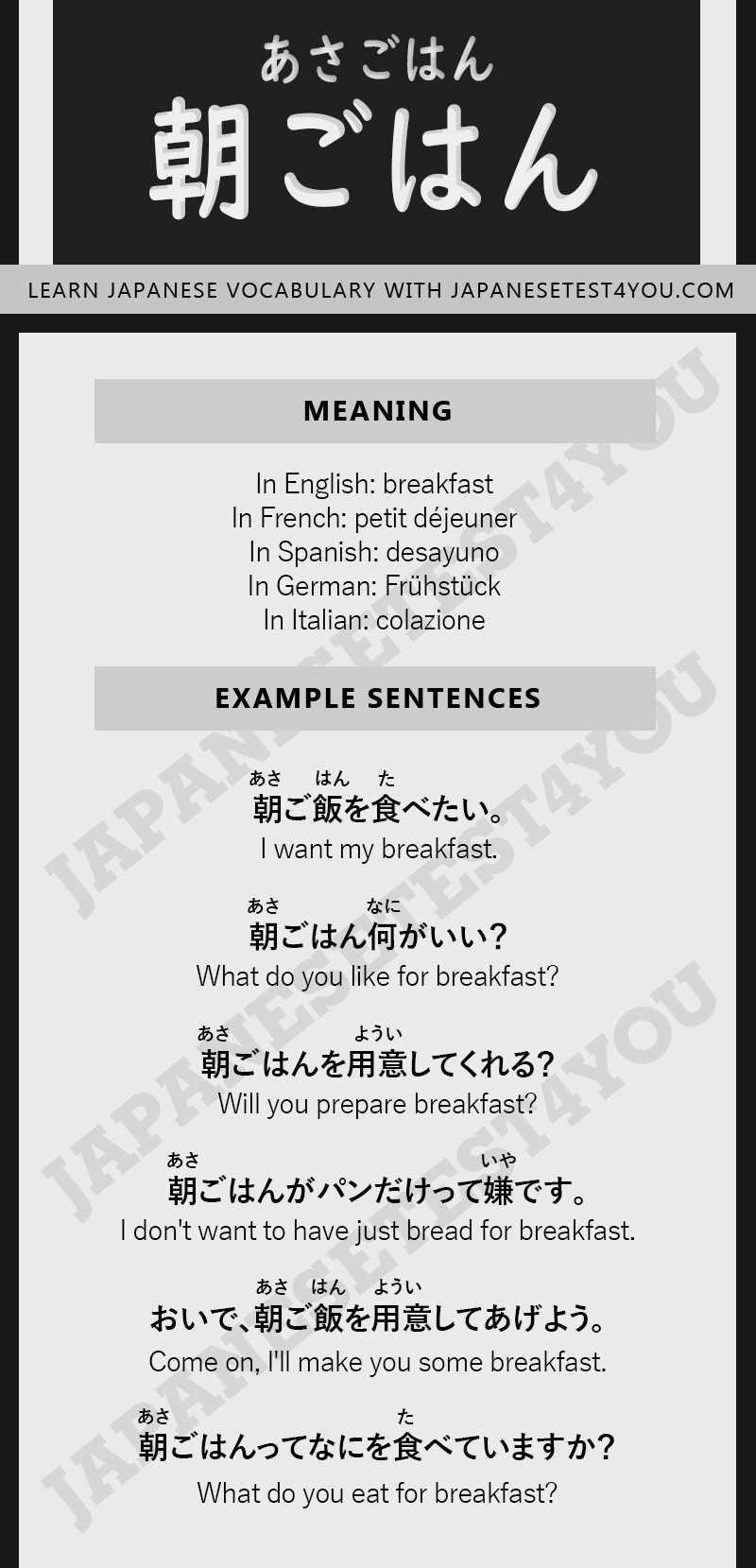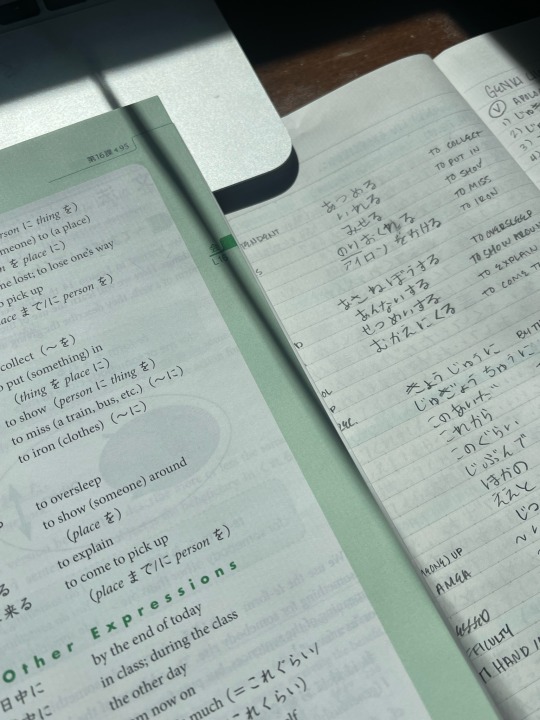#jlpt n5
Explore tagged Tumblr posts
Text

The middle of September is the time for the Japanese tradition of moon viewing. It's said that the September moon is especially pretty and round in Japan and of course there are some delicious related foods for the occasion as well.
I've gathered some articles and blog posts about 月見(つきみ)that were written for learners of Japanese in simple language. Most of these stories have a reading level fitting for JLPT N5 and N4 readers. If you are interested in learning about the traditions in Japanese, have a look - all texts are freely available online!
The Japan Foundation Kansai


This text is 8 pages long, graded as A2 and is available as a direct PDF download through the link below.
https://www.jpf.go.jp/j/kansai/clip/images/page/yomyom/002_tsukimi.pdf
Hirogaru Nihongo

Hirogaru Nihongo's article is only a few sentences short, but they also include a video on Tsukimidango and there's a reading comprehension quiz at the end.
https://hirogaru-nihongo.jp/hoshi/article/tsukimi/
Meika Sensei's Blog


Meika Sensei's blog for beginner readers has short, simple sentences that each add a bit more information. There is also a version for intermediate readers.
https://meikasensei.com/beginners/night-of-the-full-moon-and-moon-viewing-2/
Nihongoschool Nihongoblog


The blog post by Kazue Ono has two parts, one aimed at beginners and one for intermediate readers. It's a good practice to start with the beginner text and then try and read the more difficult one as well.
https://www.nihongoschool.co.uk/post/%E3%81%8A%E6%9C%88%E8%A6%8B%EF%BC%88%E3%81%A4%E3%81%8D%E3%81%BF%EF%BC%89-the-moon-viewing
Matcha Magazine


Honorable mention for Matcha Magazine: Their article isn't only for Tsukimi, but all Japanese traditions and celebrations taking place from September to November. Their articles include some translations in the main text to help with following along.
https://matcha-jp.com/easy/1348
#reading in japanese#日本語#study japanese#learning japanese#やさしい日本語#free japanese reading resources#articles in japanese#blogs in japanese#japanese reading comprehension#読書#読解#月見#つきみ#十五夜#jlpt n5#jlpt n4
167 notes
·
View notes
Text
YouTube Channels for Kids by JLPT Levels
(。•̀ᴗ-)✧ resources

こんにちは, Japanese learners! Learning a language is an exciting adventure, isn't it? To add a spark of joy to your Japanese learning journey, here's a collection of YouTube channels tailored for kids. Organized by JLPT levels, these channels offer a blend of education and entertainment for learners at different stages. Keep in mind, though, that JLPT levels aren't an exact science like math – language learning can be subjective in terms of difficulty. However, these resources provide a fantastic starting point and a fun way to explore the world of Japanese language and culture. Let's hop into this delightful world of animated learning and playful discoveries!
Friendly reminder to adjust your way of learning in order to make the most of what you're studying to reach the goal you truly want! read my post about it (ᵔ◡ᵔ)
꒰ა ˚₊ ✧・┈・╴N 5 ╴・┈・𐑺 ‧₊˚໒꒱
— Curious George (N5 level)
— Japanese folk tales/anime series (Japanese audio/Japanese subtitles) from BomBom Academy (N5 level)
— Peppa Pig (N5-4 level)
— Anpanman (N5-4 level)
— NHK education (N5-4 level)
꒰ა ˚₊ ✧・┈・╴N4 ╴・┈・𐑺 ‧₊˚໒꒱
— Cinnamon Roll, Sanrio (N4 level)
— [Anime] Atashin'chi (N4-3 level)
꒰ა ˚₊ ✧・┈・╴N3 ╴・┈・𐑺 ‧₊˚໒꒱
— Sesame Street Japan (N3 level)
— Chibi Maruko Chan (N3-2 level)
꒰ა ˚₊ ✧・┈・╴N2 ╴・┈・𐑺 ‧₊˚໒꒱
— Precure (N2 level)
またね~@inkichan
꒰ა ˚₊ ✧・┈・╴﹕꒰ ᐢ。- ༝ -。ᐢ ꒱﹕╴・┈・𐑺 ‧₊˚໒꒱
#japanese#nihongo#studyblr#learn Japanese#learning Japanese#japanese langblr#langblog#japanese studyblr#日本語#study japanese#japanese resources#free resources#resources#japanese free resources#youtube#JLPT#JLPT N5
811 notes
·
View notes
Text
Scanned book : にほんちずえほん (Japan illustrated map)

A book for kids about Japan geography, each page is dedicated to a prefecture and everything is written with hiragana and pictures help a lot to understand words. Sentences are also easy to understand and are adapted for N5 learning people.


It's also a good resource if you want to learn more about japan prefectures, cities and local facts.
I will scan and post pages, with their translation and vocabulary.

I choose Narita prefecture as a 1st page because it's a main access to Japan as a foreigner with the なりたくうこう (Narita Airport) :)
Each page of the book has always the same presentation with the name of the prefecture (けん), the number of inhabitants (じんこう) and the area (めんせき).
しょうゆ : soy sauce
ちばし : Chiba city
なりたこくさいくうこう (Narita International Airport)
なりたしにあるよ。ここからたくさんのひこうきががいこくやこくないをいったりきたりするよ。
It's in the city of Narita. From here, many planes leave and arrive from foreign countries or the interior of Japan.
らっかせい : peanuts
Please feel free to download and use this scanned content for you! Have fun reading!
73 notes
·
View notes
Text
🌌Study log 22/3/2025


⛅Weather report: cold, cloudy, moody
🙂Mood report: normal, tired
✅Finished tasks: 18
⏱️Total time of study: 4h 00 min
🗒️Notes: Memrise (vocab, Joyo, genki), genki ch., workbook, listening practice, reading practice, Lingodeer lesson, 漢字 grade 1+2+3, grammar papers, skincare
Moody weather = I'm tired, but I was studying noneless. Today I feel very much accomplished. Btw I'm progressing how I'm suppose to, so I don't feel that rushed. Planning is very important.
-photo taken with Osmo Pocket 3


#study#motivation#study motivation#study tips#language#studyblr#studyspo#japanese#japan#japanese language#learn japanese#日本語#langblr#JLPT#jlpt n5#inspireothers#get motivated#motivateyourself#stay motivated#motivatedmindset#mindset#personal growth#personal development#discipline#learn#skill#studying#bts army
44 notes
·
View notes
Text
JLPT N5 - している [Part 2]
Hey everyone, welcome to Part 2 of talking about している. This N5 grammar point is very basic but also very important. Let’s get into it shall we!
But first, here is your vocabulary:

【English Helping Verbs】
As I mentioned in Part 1, the “して“ in している can stand for any verb in て form. Sometimes it is actually する, but most times it will be some other verb.
Ok great, but what is the いる part?? Take a look at the following English sentences:
① Traffic accidents often occur here.
② I am eating.
③ The window is open.
Two of these sentences have both a helping verb and a main verb. In #1, there is only a main verb, which is “occur”. In #2 the main verb is “eating” and the helping verb is “am”. In #3 the main verb is “open” and the helping verb is “is”. Notice that one of the main verbs has the -ing suffix while the other two don’t. Make a mental note of this for later. 😉
【The いる in している】
Japanese also has helping verbs. Allow me to introduce you to one of the most common ones: いる!
The いる helping verb* adds nuance to the main verb. But here’s the thing - there are different versions of いる!In the している Part 1 article, you actually saw what I call the いる of Repetition. This いる does not translate to the -ing form of our verbs in English. If you see よく起きている for example, you should think “often occur(s)”. This is similar to example #1 above.
Examples #2 and 3 are not actions of repetition. For them, we need the other いる, which I call the いる of State or Condition. This いる sometimes makes us use that -ing suffix in our English translations. So if you just see 食べている, by default it would mean “started eating and then stayed in that state for some period of time”. Instead of all that, in English we would simply say “is eating”. This is similar to example #2 above.
開く is a different type of verb than 食べる**. Because of this, the いる of State or Condition does not lead to us using the -ing form. In this case, something is open and stays in that state for some period of time. We don’t say “is opening”. Instead we just say “is open”. For verbs like 開く, their English translations won’t use that -ing form. Instead they will be like example #3 above.
The key to the している grammar point is understanding what kind of main verb you have, and then which helping verb いる you are reading/hearing!
【いる of State or Condition】
Here are some examples where the helping verb いる expresses a state or condition.

This is how you say example #3 in Japanese.

= Tom is currently in the Philippines.
Interestingly, you could also say the following:
⑥ トムはフィリピンに来ています。***
⑦ トムはフィリピンにいます。
#5, 6 and 7 all say that Tom is in the Philippines but the nuance is different in each of them!
#5 says that Tom went to the Philippines and stayed there. This means that the speaker is NOT in the Philippines. On the other hand, #6 says that Tom came to the Philippines and then stayed there, meaning that the speaker is also there. #7 simply says that Tom is in the Philippines. We don’t have any information about where the speaker is located.

= Mizuki is wearing a white skirt and hat.
#8 has several things that I want to point out: First is that the て form of a verb can mark the end of a comment. Example 8 has two comments of equal value. This is one version of a Japanese compound sentence.
The second thing is that the ending helping verb can actually apply to TWO DIFFERENT main verbs! Native speakers hear #8 and understand the verbs to be both はいています as well as かぶっています.
The last thing is that verbs connected to clothes are very interesting. When you attach the helping verb いる, they can sometimes express the state of wearing something. However, in some contexts they can instead express the action of putting something on. For the N5 level luckily you won’t have to distinguish between wearing and putting on clothing so no worries. It is good to keep this tidbit in the back of your mind for the future though.
【Conclusion】
So there you have it. Now you know that the している grammar point can express several situations. You could have:
・Repetition - there will be a word/phrase that indicates that the action happens repeatedly. The English translation won’t use the -ing form of a verb
・State or a Condition - there MAY or may not be a word/phrase indicating repetition. The main thing to focus on is whether the verb is an action verb or not. This will help you decide if you need -ing or not.
As always, keep your eyes and ears open for different kinds of examples and try to notice patterns. You can do it!
Rice & Peace,
– AL
👋🏾
*I purposely say “the helping verb いる“because there is also the regular いる verb. It’s the same with the “be”, “do” and “have” verbs in English. “Am” in “I am a teacher” plays a different role than the one in “I am eating.”
** 食べる is a transitive verb while 開く is an intransitive verb. Usually transitive verbs will translate to -ing and intransitive verbs won’t. Of course there are exceptions so keep an open mind.
*** When choosing between 来ている、行っている、and いる think about where the speaker is located as well as if you want to stress the movement of the subject.
#japanese#japanese studyblr#japanese language#japanese grammar#日本語#isshonihongo#jlpt n5#jlptn5#jlpt#nihongo#japanese langblr#learn japanese#japanese lesson#japanese study#studying japanese#japaneselessons#learnjapanese#language#languages#language study#language studyblr#language blr#日本語の勉強#にほんご
62 notes
·
View notes
Text
やばい Alternatives | Vocab
Step 1 of 「伝える力」 が伸びる! 12歳までに知っておきたい語彙力図鑑 focuses on teaching you synonyms for words you would typically use to describe your emotions. There are synonyms for words like やばい, エモい, and the like. This particular post will focus on the information that they've given about やばい。
The book also ranks the words' difficulty level, with 1 star being an "of course you know this" to 5 stars being "even adults probably don't know this and you're about to blow them away with your vocabulary and make them pull out their dictionary." Because of this, you may see words that you encountered quickly as a Japanese learner (that a native speaker 12 year old may not have encountered yet) and vice versa on the list below.


やばい
Because やばい is a word that can be used to express nearly any emotion (much like how OMG can be used in many contexts in American English), the book did also make sure to put the contexts in which the alternative word would be appropriate.
危うい (あやうい)- dangerous; in danger; facing imminent danger ❖This is to be used when dangerous situations are imminent. The way they described it was "危険が迫っている状態" ▶︎Their example: 危うい所でピンチを脱出した。
危険 (きけん)- dangerous; risky; uncertain; precarious; in danger ❖This is to be used when a situation may lead to not-so-good/dangerous outcomes. ▶︎Their example: そんなに高い所からジャンプしたら、危険だよ。
驚異的 (きょういてき)- wonderful; astounding; marvelous ❖This is to be used when something passes a level of surprise that you can express. ▶︎Their example: 大谷選手の達成した記録は驚異的だ。
最高 (さいこう)- best; supreme; wonderful; highest; maximum; supreme ❖This is to be used when describing something of the highest status/dignity/ranking. (This is relative in comparison to other things.) ▶︎Their example: 夏休みに友達と見に行った映画が、最高に面白かった。
素晴らしい (すばらしい)- wonderful; splendid; magnificent ❖ This is used to describe something that's elegant/praiseworthy/splendid, things that are desirable, and things that admirable. ▶︎Their example: 富士山の山頂から眺める景色は、息をのむほどに素晴らしい。
Yojijukugo (四字熟語)
This section also includes four-character compound idioms (yojijukugo) that can be associated with the word we're focusing on expanding our vocabulary from.
絶体絶命 (ぜったいぜつめい)- desperate situation with no escape; being driven into a corner; being cornered; last extremity ❖ You would use this when you find yourself in a situation that there's no conceivable way you could think of making it out in the way that you truly desire. ▶︎Apparently you can use it in phrases like this 「絶体絶命のピンチ」 BONUS: I found an example online that also uses it to mean "stalemate" and the example is a cop and a suspect both pointing a gun at each other.
最上無二 (さいじょうむに)- there is nothing else like it in this world; it's an unparalleled marvel ❖They listed this one at 5 stars (aka, the adults are gonna be surprised that you know this and also go look it up) and I can certainly see why--I couldn't find any official English translations of it. Here's the definition the book gave: この世に二つとなく、最もすばらしいこと。「最上」は最もすぐれていること、「無二」は同じ物がないことを意味するよ。
SOMEONE PLEASE CORRECT ME IF MY UNDERSTANDING OF THIS LAST YOJIJUKUGO IS INCORRECT SO THAT I CAN LEARN IT PROPERLY!! I BESEECH THEE!! I IMPLORE YOU!!
Anyways, the next post will be alternatives words for かわいい and エグい
#vocab#japanese#japanese vocab#mine#learn japanese#kanji#jlpt#jlpt prep#jlpt n2#jlpt n1#jlpt n3#jlpt n4#jlpt n5#learning through reading#learn through immersion#reading comprehension#look toki#onigiristudies#jpnstudynet
104 notes
·
View notes
Text
If you understand this, you are JLPT N5 level!
youtube
77 notes
·
View notes
Text
I learned it's easier to learn verbs in their ない form first, vs. their dictionary form first. Makes recognizing the difference between Godan and Ichidan verbs 100% easier and removes the need to "remember" the "hidden/fake/lying" verbs that parade as the other verb type. The trick to doing it is far easier and I hate how Genki teaches it in the book. Leaving me with only having to learn the conjugation patterns for Ichidan, Godan, and Irregular verbs. Far, far easier.
#learning japanese#fountain pen#jlpt#jlpt n5#kanji#japanese#日本語#senchastudying#studying#studyblr#langblr#language#fountain pen ink#見#Verbs#Japanese Verbs#Japanese Vocabulary#japanese langblr
308 notes
·
View notes
Text

Batch download Japanese vocabulary infographics
#japanese#nihongo#japan#learn japanese#languages#jlpt#jlpt n5#japanese vocabulary#japanese langblr#japanese language#learning japanese
97 notes
·
View notes
Text



I got my N5, I want to be N2 someday
16 notes
·
View notes
Text
Kanji of the day
自分 (JLPT N5)
Kanji breakdown: じぶん
自:じ // 分: ぶん
m: oneself, myself, I
Stroke Order:


Source
#japanese#learning japanese#japanese vocabulary#japan#hiragana#kanji#learn japanese#langblr#JLPT N5#new word#language blog#japanese language learning resources#language study#language learning#language tumblr#linguistics
16 notes
·
View notes
Text
JLPT N5 Kanji
一 One 二 Two 三 Three 四 Four 五 Five 六 Six 七 Seven 八 Eight 九 Nine 十 Ten 人 Person 日 Sun 大 Big 年 Year 出 Exit 本 Book 中 Middle 子 Child 見 See 国 Country 上 Up 分 Part 生 Life 行 Go 間 Interval 時 Time 気 Spirit 女 Woman 前 In front 入 Enter 小 Small 後 Behind 下 Down 長 Long 学 Study 月Moon 何 What 来 Come 話 Talk 山 Mountain 高 Tall 今 Now 書 Write 名…
16 notes
·
View notes
Text


when am i not studying ☕️🏹🏛️
#studyblr#study blog#langblr#langblog#japanese langblr#japanese language#japanese#studyinspo#study motivation#study aesthetic#jlpt n3#jlpt#jlpt n5#jlpt n4#japanese kanji#studystudystudy#exam study#study buddy#study hard#study#study notes#study space#coffee aesthetic#coffee order
91 notes
·
View notes
Text
understand, see, hear · particle が · particle と
(。•̀ᴗ-)✧ N5 grammar [ことのは lesson 18]

わかる, みえる, きこえる
The particle を is generally used to indicate the direct object with transitive verbs, but with the verbs: 分かる (わかる -> to understand), 見える (みえる -> to see), 聞こえる (きこえる -> to hear) you have to use the particle が
example: スパイン語(ご)が分(わ)かりますか translation: do you understand Spanish?
particle が
we have seen the particle が being used to indicate the direct object of some verbs, but it can also express a relationship between two contrasting or opposing clauses.
example: 冬(ふゆ)ですが、 今日(きょう)は 暑(あつ)いです translation: it is winter, but it's hot today
particle と
✩ with (accompained by): this particle is used to indicate specify the person or animal with whom an action is being performed. person/animal と -> with person/animal
example: ケンくんとこの映画(えいが)を見(み)ました translation: I saw this movie with Ken
✩ exhaustive list nouns: this particle is used at the end of a list of two or more objects (inanimate or animate). Noun A + と + Noun B -> Noun A and Noun B
example: サラさんに 本(ほん)と辞書(じしょ)をあげました
translation: I have my book and dictionary to Sarah.
またね~@inkichan
꒰ა ˚₊ ✧・┈・╴﹕꒰ ᐢ。- ༝ -。ᐢ ꒱﹕╴・┈・𐑺 ‧₊˚໒꒱
#japanese#nihongo#studyblr#learn Japanese#learning Japanese#japanese langblr#langblog#japanese studyblr#日本語#n5#JLPT N5#grammar#basic grammar#japanese grammar#ことのは
133 notes
·
View notes
Text
🌌Study log 10/3/2025

⛅Weather report: sunny, freezing cold
🙂Mood report: normal
✅Finished tasks: 14/17
⏱️Total time of study: 2h 00 min
🗒️Notes: Memrise (vocab, Joyo), genki ch., workbook, listening practice, Lingodeer lesson, 漢字 grade 1+2+3, fitness, 6K walk, mediation, skincare
-photo taken with Osmo Pocket 3 and edited in Photoshop


#study#motivation#study motivation#study tips#language#studyblr#studyspo#japanese#japan#japanese language#learn japanese#日本語#langblr#jlpt n5#inspireothers#get motivated#motivateyourself#stay motivated#motivatedmindset#mindset#personal growth#personal development#discipline#learn#skill#studying
52 notes
·
View notes
Text
JLPT N5 - している [Part 1]
している is a grammar point that is very very important in Japanese. The “して” part represents a verb in the て form. The “いる” part is the verb いる, which will change to different forms (for example います、る or ます).
している actually appears in several levels of the JLPTs - from N5 all the way to N2! As for the N5 level, there are 2 main ways that you will see it used. In this post let’s look at one of them!
First, here is your vocabulary.

【Repeated Actions】
First let’s look at how している is used with repeated actions. These actions are mostly physical.

= I climb Mt. Fuji every year.
Notice the two highlighted words, 毎年 and 登って. If 毎年 weren’t there you would almost always translate 登っています as “am climbing”. However, because 毎年 expresses repetition, it forces us to translate 登っています as “climb”.

= Traffic accidents happen on this street often.
起きる is a verb that can mean “to wake up” or “to occur”. If sentence #2 didn’t have the word よく it would be understandable to translate 起きています as “are occurring”. However because of the よくwe understand that there is repetition and so we go with the “occur” translation instead.

= Well you see, Dad has been going to China for work once a month since last year.
This time the word / phrase that expresses repetition is 毎月1回 meaning “once a month”. This tells us that 行ってる is “goes” instead of “is going”. Also, the い in the helping verb いる can be dropped, making 行ってる a more casual way of saying 行っている. It also works for います so that 行ってます is more casual than saying 行っています。
Finally, take a look at the nuance section. This んです is actually a different JLPT grammar point. The gist is that it’s used when you want to answer a question with extra details that you think the listener/reader wants to know. The ん is a shortened version of the particle の.
【Occupation or Social Position】
している is also used to talk about someone’s occupation or social position.

= Taiki teaches Japanese at a Thai university.
There is no period of repetition stated outright, but we understand that teaching is a job that you do over and over. Thus, you should use 教えています instead of 教えます。

= Aya is a trading company manager.
In this case, the しています simply means “is” or “has the position of”.

= My little brother studies European history at a German university.
This last example is a good one to remember. Most times, if you say 勉強しています it will mean “currently studying”. However when it comes to being a student, the translation shifts to “studies (for an extended period of time)”. Actions that can be interpreted either way (like studying) will sometimes have time words / phrases like 今 (now) or 2、3時間 (for a few hours). That tells you that it is an action in progress. Other than those kinds of phrases, usually the meaning will be repetitive.
【Conclusion】
So there you have it! The first している is associated with repeated actions, occupations, or positions in society or work. It’s fairly easy to figure out if the sentence is talking about an occupation or a position. For repeated actions, the key is to look for words / phrases that express repetition and remember that they cause you to use the している version of your verb. With that, you should be fine!
Rice & Peace,
– AL
👋🏾
#japanese#japanese studyblr#japanese grammar#japanese language#日本語#isshonihongo#jlpt#jlpt n5#一緒日本語#している
54 notes
·
View notes